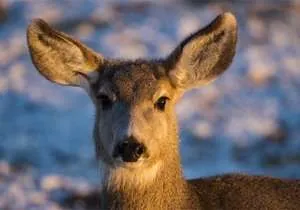“Kansas wetlands are some of the most important fall and spring stopovers for waterfowl in the Central Flyway, but much of the wetland habitat has been lost due to wetland conversion to other land use, which forces birds to concentrate on fewer and fewer wetlands,” said John Denton, manager of conservation programs for Nebraska and Kansas. “Past wetland loss and the constant threat of wetland conversion make every acre conserved using these grant and partner funds that much more important.”
Since 2011, NAWCA has invested more than $1.7 million in grant funds for wetland protection and restoration of habitat in Kansas. Ducks Unlimited and its conservation partners match NAWCA funds at least dollar for dollar and many times at two to three times the amount. Project areas include the Talmo Marsh Wildlife Area, which will benefit from over $200,000 worth of work scheduled over the next year to restore 300 acres of wetlands, and the Nesho Wildlife area, with more than $1 million worth of wetland enhancement work scheduled. DU will also restore wetlands in the McPherson Wildlife Area and the Quivira National Wildlife Refuge, adding and replacing levees and water control structures to restore wetland functions.
The North American Wetlands Conservation Act of 1989 was passed, in part, to support activities under the North American Waterfowl Management Plan. It provides competitive, matching grants to organizations and individuals who have developed partnerships to carry out wetlands conservation projects in the United States, Canada and Mexico for the benefit of wetlands-associated migratory birds and other wildlife. Program funding comes from Congressional appropriations; fines, penalties, and forfeitures collected under the Migratory Bird Treaty Act of 1918; the Federal Aid in Sport Fish Restoration Act of 1950; and interest accrued on the fund established under the Federal Aid in Wildlife Restoration Act of 1937.
Ducks Unlimited Inc. is the world’s largest non-profit organization dedicated to conserving North America’s continually disappearing waterfowl habitats. Established in 1937, Ducks Unlimited has conserved more than 13 million acres thanks to contributions from more than a million supporters across the continent. Guided by science and dedicated to program efficiency, DU works toward the vision of wetlands sufficient to fill the skies with waterfowl today, tomorrow and forever. For more information on our work, visit www.ducks.org. Connect with us on our Facebook page at facebook.com/ducksunlimited, follow our tweets at twitter.com/ducksunlimited and watch DU videos at youtube.com/ducksunlimitedinc.




